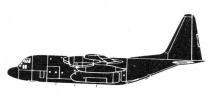Incident Overview

Description
The Vickers Viscount aircraft was operating a scheduled passenger flight from London, U.K. to Innsbruck, Austria. The flight proceeded at FL210 towards the destination. Over the Allersberg VOR, the aircraft was positively identified by radar control. At 13:02 hours, while over the ‘Mike’ NDB, the radar return from G-ATFN was seen to coincide with that of another aircraft some 13,000 ft below. At this time the Munich Controller called G-ATFN , advised the aircraft of its position and cleared it down to FL120. There was no reply to this or any subsequent call by Munich. Only one radar return was observed to leave ‘Mike’ and this merged into Munich radar’s permanent echoes at about 13:04 hours. Subsequently it was established that G-ATFN had crashed on the autobahn approximately four nautical miles north of ‘Mike’. The aircraft had hit the ground in a slightly nose-down attitude with the wings almost level and broke up on impact. A fierce local fire broke out in the remains of the centre section. Almost due west of the accident site, the outer section of both wings, which had become symmetrically and simultaneously detached, were found. PROBABLE CAUSE: “The accident is attributable to the fact that the aircraft’s electrical power supply failed in cruising flight – possibly without the generator warning lights illuminating or illuminating distinctly – which meant that during the subsequent descent, which had to be carried out by instruments because of the weather, the vital instruments for indicating the flight attitude showed increasingly incorrect readings and failed completely after the gyros had stopped rotating. Under these conditions it was unavoidable for the aircraft to get into uncontrolled flight attitudes, in which it was subjected to severe loading. These loads exceeded the ultimate load and led to structural failure. Following the fracture of the wings and elevator and when the crew came into visual contact with the ground, it was no longer possible to exert any decisive control over the flight path. It has not been possible to determine with certainty the cause of failure of the electrical system. It may be assumed, however, that a fault occurred in the DC generator control circuit. Faults had occurred repeatedly in the electrical supply system without their true cause being discovered.”
Primary Cause
Electrical power supply failure during descent due to faulty generator control circuit.Electrical power supply failure during descent due to faulty generator control circuit.Share on:





